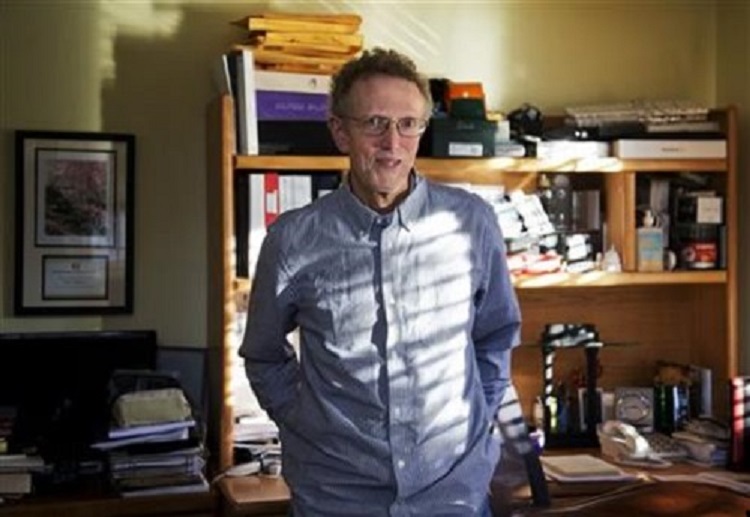
Roberton Williams’ plan was to retire on his government pension and take a part-time job to make up the difference in salary. It didn’t quite work out that way.
Williams, 68, did retire but then started another full-time job with the Tax Policy Center, a Washington think tank.
“The plan was to work full time just until I got my feet wet,” Williams said. “But, I ended up working full time for the next nine years.”
He’s far from an aberration. Many aging baby boomers are caught between a desire to work less and a labor market that just isn’t ready to let them go.
According to the Bureau of Labor Statistics, 17.7 percent of people 65 and older are still working in some capacity, compared with 11.7 percent in 1995.
Of course, part of this increase could be due to a growing fear felt by many Americans about financial insecurity during retirement. Survey data has shown that fears about outliving one’s savings are factoring into retirement planning. That is even prompting 34 percent of workers age 60-plus to say they plan on working until they die, or are too sick to work, according to a recent Wells Fargo survey.
Some workers just want a gradual transition, whether for financial reasons or just to keep working jobs where they can still contribute and help train the next generation.
Slightly more than 40 percent of U.S. workers hope to cut back hours or transition to a less demanding position before retirement, according to a 2015 report from the Transamerica Center for Retirement Studies.
One option offered by a small number of employers is “phased retirement,” which allows retiring workers to go part time while also mentoring their incoming replacement, providing for a smoother transition. The Society for Human Resource Management puts the number at 8 percent.
In other cases, employers are eschewing formal arrangements in favor of short-term contracts.
“One thing we see is that employers are increasingly able to tap into a more flexible labor market, rather than going through formal HR structures,” says Jean Setzfand, AARP’s senior vice president of programs. “So having hard-and-fast rules for this can be difficult.”
For federal workers, Congress passed legislation in 2012 creating a phased-retirement program, and the Office of Personnel Management, or OPM, formalized the rules last year.
To date, OPM has only finalized 16 applications for phased retirement from workers at the Library of Congress, NASA, the Broadcasting Board of Governors and the Energy Department. It expects to soon receive 12 more from the Smithsonian Institution_that’s from a federal workforce where 45 percent of employees are aged 50 or over.
OPM has stressed that it is up to individual federal agencies to decide when and if they will offer a phased-retirement option to their employees.
Tancred Lidderdale, 62, is one of the initial 16 who chose phased retirement. He works for the Energy Department as an economic forecaster, applying highly complex mathematical models to oil and gas markets. He’s had an integral part in building these models over the past two decades.
“I know our agency would miss me,” Lidderdale said. “They knew I was thinking about retirement and mentioned this option as a way to help pass on what I know before I leave.”
Lidderdale will work part time for the next two years. But, after nearly three years of waiting, many other federal workers are wondering if the program will even arrive in time for them.
“We have people with over 35 years of experience waiting to retire here, and it’s a shame that many of them could walk out the door without the ability to pass that knowledge,” says David Maxwell, 64. Maxwell is an air quality specialist with the Bureau of Land Management. Maxwell says if the bureau does offer the program, he’d be interested.
In a statement BLM says the Interior Department recently issued guidance and “expects to complete a draft phased-retirement policy by the spring of 2016.”
One explanation for the ongoing delays is that agreements must first be struck between management and labor unions. Email and phone requests for comment to AFGE, the largest federal labor union, were not returned.
There are also just basic difficulties of scale. How do you offer the same option to all workers when not all jobs are created equal?
“A lot of these people who would qualify for phased retirement are senior staff and managers,” Jessica Klement, legislative director for the National Association of Retired Federal Employees, said. “How do you allow someone who is managing a department to take two days off per week?”
Klement says union members are calling asking when phased retirement will come to their agency. “I just don’t think there is a strong desire from federal agencies to do this,” she said.
In the private sector, some older workers looking to spend less time in the office are simply leaving one job for another.
Sally Korth, 65, has spent almost 40 years in the health care industry, first as an emergency room nurse and later as an executive overseeing the transition to electronic medical records for large corporate accounts.
“I was working 60-70 hours per week, and one Christmas I was spending some time with my kids and grandchildren, and I just thought, ‘What am I doing?'”
So, Korth took a new job, for significantly less pay, and recently scaled back her hours to four days per week. “That extra day off is huge,” she says.
As for Roberton Williams, he hopes to cut back to four days a week next year_and then finally retire at 70, “whether I like it or not.”
___
EDITOR’S NOTE — Adam Allington is studying aging and workforce issues as part of a 10-month fellowship at The Associated Press-NORC Center for Public Affairs Research, which joins NORC’s independent research and AP journalism. The fellowship is funded by the Alfred P. Sloan Foundation.
